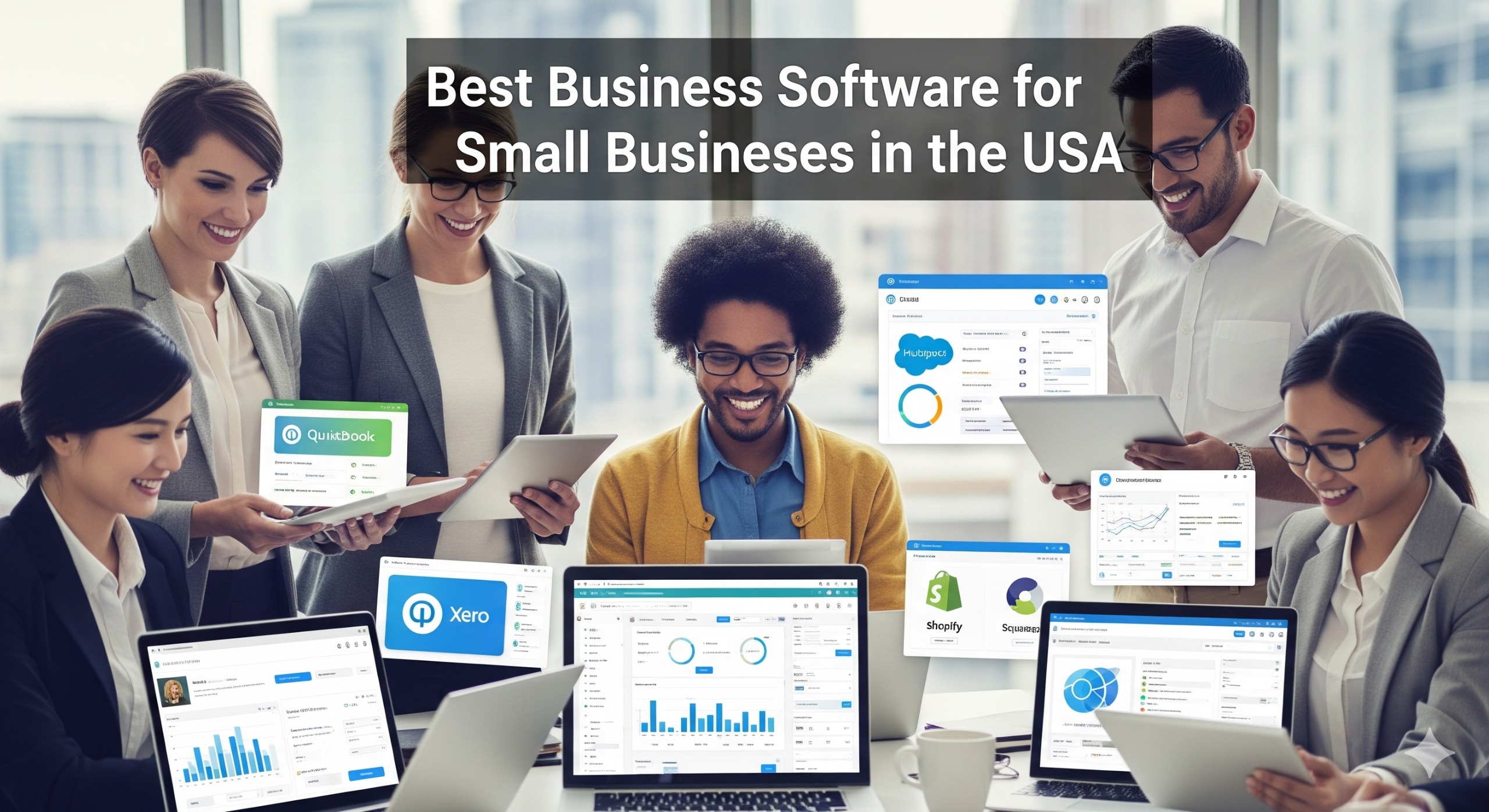
Introduction: The Elusive Quest for the Best Business Software
Every small business owner in the USA dreams of finding the perfect software to run their operations smoothly. Whether it’s accounting, customer relationship management (CRM), enterprise resource planning (ERP) or contract management, countless options promise to revolutionize your business.
But here is the catch: Is the “best business software for small businesses” really the best? Many know the hype. Few dare to question it. This blog cuts through the marketing fog to expose the truth.
This post promises: no sugar-coating, no sales tactics. It will challenge why the “best” software might not fit your small business and explain the hidden risks, costs and frustrations you should beware.
Stick around if you want the raw reality of small business software in the USA.
Timeline: How the Small Business Software Scene Evolved and Why It Matters
Before diving into criticism, a brief look at the timeline highlights why problems persist despite decades of tech progress:
- 1980s to 1990s: Small business software was basic and desktop bound. Expensive licenses and complicated installations were the norm. Still, it met simple needs like billing and bookkeeping.
- 2000s: The cloud revolution began. SaaS (Software as a Service) promised affordable, accessible tools. Adoption exploded, but so did fragmentation too many apps, little integration.
- 2010s: The rush to automate and digitize business processes led to complex ERP and CRM suites beyond many small businesses’ reach. Vendors pushed up prices with modular add ons.
- 2020s: AI and automation hype accelerated adoption of “smart” tools. But many small businesses found themselves locked into complex contracts, rising subscription costs and underwhelming outcomes.
The takeaway? Small business software has matured technically but grown complicated and costly. What once empowered businesses now often frustrates them.
The Reality Check: Why “Best Business Software” Isn’t Always For Small Businesses
Despite glossy reviews and hundreds of options, many small business owners face similar problems when choosing and using software:
1. Skyrocketing Total Costs Subscriptions Add Up
Most “best” software today follows a subscription model. At first, low monthly fees look attractive. Yet once you add users, integrations, premium features and training, costs balloon. Small businesses with limited budgets feel the pinch.
- Hidden fees for add ons and integrations dilute savings.
- Annual price hikes often catch users off guard.
- Canceling contracts can be a nightmare due to lock ins and penalties.
Many SMBs suffer from surprise expenses, undermining the dream of affordable tech.
2. Complexity and Learning Curves
Popular business software often aims to be all things to all businesses. But this breadth brings complexity:
- Difficult interfaces and jargon heavy features overwhelm users without tech expertise.
- Training takes time time small businesses can’t always spare.
- Frequent updates break workflows and confuse employees.
What’s marketed as easy often demands consultants or dedicated staff. That burden contradicts the DIY spirit many small teams need.
3. Integration Nightmares
One company’s “best” means nothing if it doesn’t talk to others in your toolkit. Unfortunately, many small business software products:
- Lack seamless integration with other apps.
- Require expensive middleware or custom solutions.
- Multiply data entry tasks instead of automating them.
Result? Fragmentation and inefficiency persist despite adding more tools.
4. Vendor Lock In and Data Ownership Concerns
Small businesses often don’t realize how much their data becomes captive inside proprietary systems:
- Exporting data can be difficult or incomplete.
- Switching software involves costly migrations or risks data loss.
- Vendor service quality deteriorates post sale with less priority given to small clients.
Lock-in restricts freedom and innovation options, squeezing SMBs over time.
5. Over Hyped Features with Minimal Real Value
New features grab headlines: AI powered insights, blockchain security, predictive analytics. Yet small businesses find many of these features:
- Underutilized due to lack of expertise or relevance.
- Sometimes gimmicks rather than practical tools.
- Distracting from solving core operational problems.
The obsession with “cutting edge” can distract SMBs from basics like reliable invoicing or inventory control.
A Critical Look at Popular Solutions

To illustrate these challenges, let’s examine some widely recommended small business software in the USA and the common criticisms around them:
QuickBooks Online The Accounting King with a Catch
QuickBooks Online is the leading accounting software for small businesses. It promises easy bookkeeping, invoicing, and payroll. But realities complicate the picture:
- Cost: Starts low, but higher tiers for multi-users and advanced features surge to nearly $100/month or more.
- Complexity: Beginners often struggle with advanced bookkeeping features, requiring accountant help.
- Customer Service Complaints: Many users report unresponsive or expensive support.
- Data Export Issues: Migrating off QuickBooks is troublesome, risking data and time loss.
In short, QuickBooks is powerful but can overwhelm and strain small business budgets.
Sage 50 Great Power vs Steep Learning Curve
Sage 50 offers robust accounting and inventory management. Yet:
- The software is not as cloud friendly as competitors, limiting flexibility for remote teams.
- Steep learning curve for non accountants can delay ROI.
- No free tier or low cost starter package makes it less accessible for microbusinesses.
- Add-ons and integrations increase total cost significantly.
It’s strong but can be intimidating and costly to smaller businesses.
Microsoft Dynamics 365 Business Central Feature Rich but Not for Every SMB
This ERP solution integrates well with Microsoft tools but:
- Pricing at $175/user/month makes it prohibitive for many small outfits.
- Heavy setup and customization demand IT expertise.
- Overkill for firms with simple operations.
Ideal for scaling businesses but penalizing for smaller, less complex companies.
PandaDoc CLM Streamlining Contracts, But Design & Reporting Limits
Contract lifecycle management software PandaDoc speeds document flow but:
- Reporting and analytics features are underwhelming.
- Document design customization is limited, causing formatting headaches.
- Integrations like Salesforce come with extra costs that small businesses might not afford.
A helpful tool, yet far from a plug and play solution for SMBs.
Why Small Businesses Should Reconsider the Search for “The Best”
The quest for the “best business software” may lead small businesses down a costly and stressful rabbit hole. That’s because:
- Businesses differ wildly in needs, budgets, and tech savviness there’s no single “best.”
- Simple, affordable tools combined strategically often outperform complex suites.
- Evaluating ROI requires more than feature lists it demands understanding workflows and pain points deeply.
Instead, owners should focus on:
- Usability over bells and whistles.
- Transparent pricing structures.
- Vendor support reputation.
- Flexibility for growth and change.
The Bigger Picture: Why Software Choices Impact Small Business Survival
Research shows small businesses that struggle with software adoption face:
- Lost productivity and employee frustration.
- Financial stress due to unplanned expenses.
- Risks of errors from duplicate data or manual processes.
- Vulnerability from vendor lock-in and lack of data control.
Choosing blindly based on “best seller” lists without careful consideration can be financially and operationally damaging.
Conclusion: A Call for Smarter More Critical Software Decisions
The phrase “best business software for small businesses in the USA” is tempting, but often misleading. Popular options come with real downsides inflated costs, complexity, lock in and overhyped features.
Small businesses deserve software choices based on honest assessments and tailored fit, not marketing spin. Before jumping on the shiny new tool, ask:
- Does this solve my core pain points?
- Can I afford the total cost over time?
- Will my team actually use it effectively?
- Am I prepared for the commitment this choice demands?
Only with a clear eyed, critical approach can small businesses truly benefit from technology and avoid unnecessary struggles.
